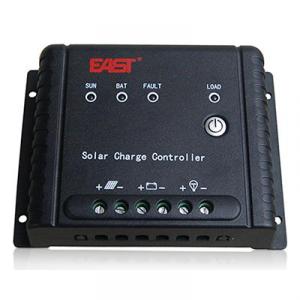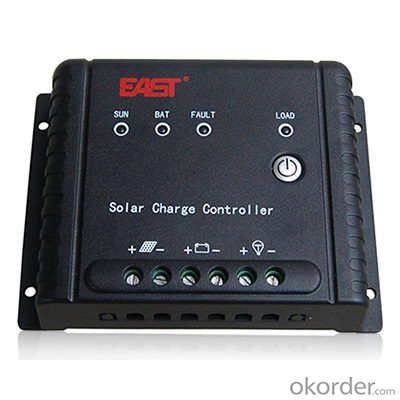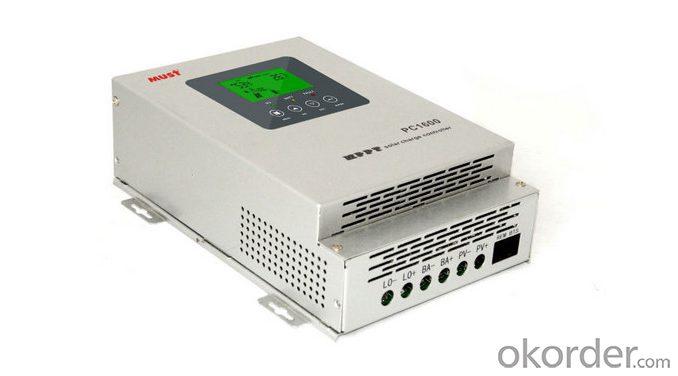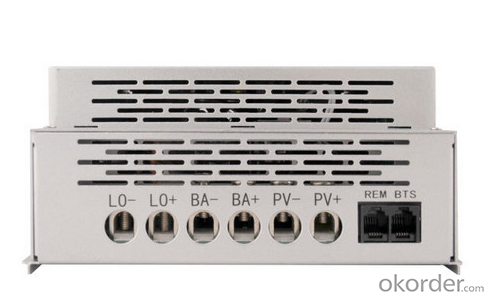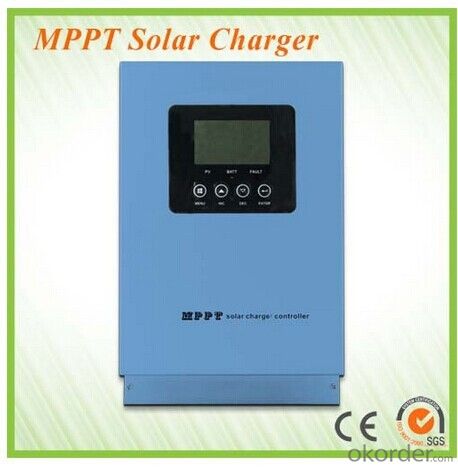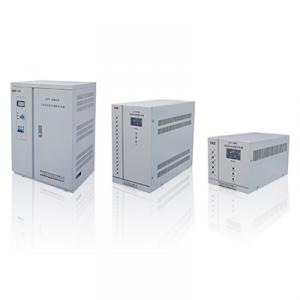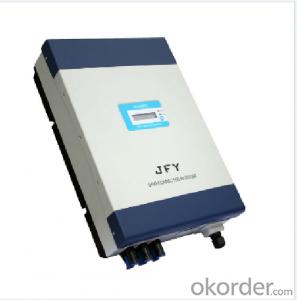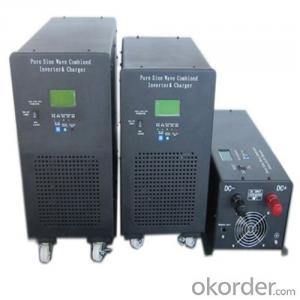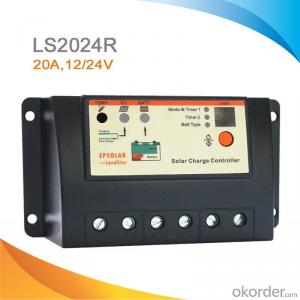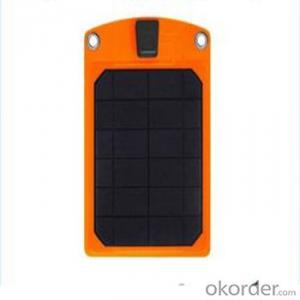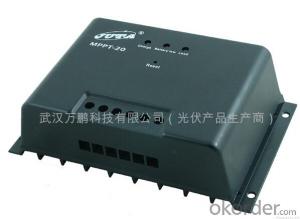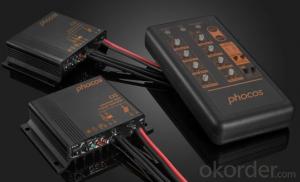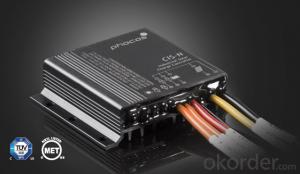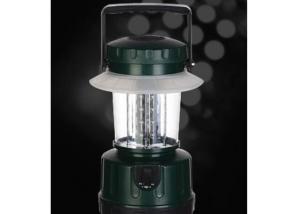Camping Solar Inverter with Solar Charge Controller LED 5A-20A Maximum Power Point Tracking
- Loading Port:
- China main port
- Payment Terms:
- TT or LC
- Min Order Qty:
- 1 pc
- Supply Capability:
- 1000 pc/month
OKorder Service Pledge
OKorder Financial Service
You Might Also Like
Solar Charge Controller LED 5A-20A
This is a highly intelligent charge controller with Maximum Power Point Tracking (MPPT). The optimal and intelligent “MPPT + SOC” charge control is implemented. The power switching components consist of low-loss MOSFET type transistors that have a long operating life and guarantee high performance. The extremely low own consumption makes it especially suitable for solar home systems, solar street lamp system, advertising lighting, traffic management system, and other professional applications etc. With the reverse polarity protection, lightning protection, electronic fuse and automatic detection of faulty battery, the controller is robust, maintenance-free and user-friendly.
● Solar home system
● Public security monitoring system
● Solar street lamp system
● DC signal light power supply system
● Small and medium size telecommunication station power supply system
● Small size solar power station system and solar DC power supply system
Model | F12-05 F12-05M | F12-10 F12-10M | F12-20 | F24-05 F24-05M | F24-10 F24-10M | F24-20 |
System Voltage | 12V | 24V | ||||
Rated Charging Current | 5A | 10A | 20A | 5A | 10A | 20A |
Rated Load Current | 5A | 10A | 20A | 5A | 10A | 20A |
PV Panels Configuration(Suggestion)(Imp≤Rated Current) | ≤5A | ≤10A | ≤20A | ≤5A | ≤10A | ≤20A |
Battery Capacity | 17Ah~400Ah | |||||
Max. Efficiency | > 98% | |||||
Static Dissipation | < 0.5%(system rated current) | |||||
Solar Battery Port Input Voltage Range | 0 - 25V | 0 - 50V | ||||
Rated Battery Voltage | 12V | 24V | ||||
Buck Charge Voltage | 14.6V±0.2V | 29.2V ±0.3V | ||||
Float Charge Voltage | 14.4V±0.2V | 28.8V±0.3V | ||||
Overcharge Protection | 14.7V±0.2V | 29.4V±0.3V | ||||
Charging Resume Voltage | 13.2V ±0.2V | 26.4V ±0.3V | ||||
Undervoltage Alarm | 11.2V±0.2V | 22.4V±0.3V | ||||
Over Discharge Protection | 10.8 V±0.3V | 21.6V±0.4V 3.2V ±0.3V | ||||
Over Discharge Resume Start Voltage | 13.2V ±0.3V | 26.4V±0.3% | ||||
Discharge Circuit Voltage Drop | < 4 % (system rated voltage) | |||||
Overload, Short-Circuit Protection | 125%(60s)/ 150%(10s) / short-circuit auto shut down; | |||||
Input Overvoltage Protection | 200%(rated voltage) | |||||
PV Reverse Polarity Connection Protection | YES | |||||
Control Mode | Switch control / PWM | |||||
Display | LED | |||||
Alarm Mode | sound(optional)、light alarm | |||||
Working Temperature | -20℃ ~ +45℃ | |||||
Relative Humidity | 0-95%(noncondensing) | |||||
Altitude | 1000m with rated power (increase 100m, reduce power 1%) Max.4000m | |||||
Storage Temperature | -25℃ ~ +85℃ | |||||
Storage Humidity | ≤85% | |||||
Installation Method | hanging vertical installation | |||||
Packing Dimension WxDxH(mm) | 136× 100× 35 | |||||
Packing Weight(kg) | 0.23 | |||||
Weight(kg) | 0.28 | |||||
Package | 40pcs/carton | |||||
· Q. What is an UPS and What it is for ?
An uninterruptible power supply (UPS) is a device that allows your computer or telephone switch or critical equipement to keep running for at least a short time or longer time when the primary power source is lost. It also provides protection from power surges, spikes, brownouts, interference and other unwanted problems on the supported equipment.
· Q. How long the UPS to run when power goes?
This can take 3 paths.
1.You can pick a UPS that is rated for pretty much the full VA you need so it will be running at 100% of capability and will thus last 'n' minutes.
2.You can pick a UPS that is rated at a much higher VA value than you really need so, for example, is running at 50% of capability and will thus last for longer than the UPS from option 1.
3.You can use extra external battery packs to run for longer. If charging capability allows, the more and the bigger batteries you take with, the longer time UPS runs.
or using a generator after about 6 hours, it will be more cost-effective, with a short runtime UPS to bridge the generator start-up gap.
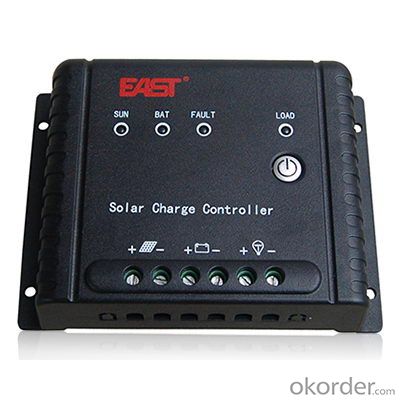

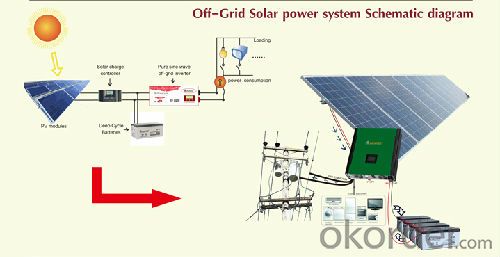
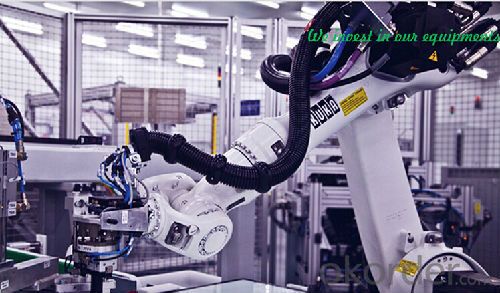
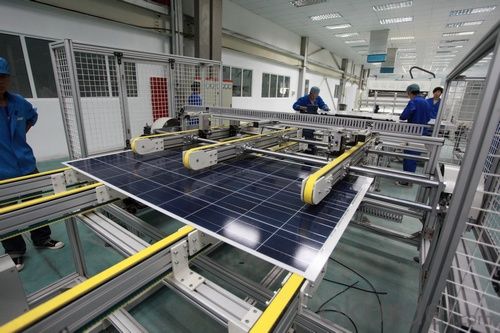
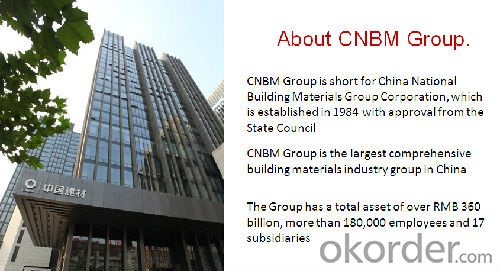
- Q: Is it possible to monitor the performance of a solar inverter remotely?
- Yes, it is possible to monitor the performance of a solar inverter remotely. Many modern solar inverters come with built-in monitoring capabilities that allow users to track and analyze the system's performance from a remote location. This can be done through dedicated monitoring portals or mobile applications which provide real-time data on energy production, system efficiency, and any potential issues or faults. Remote monitoring enables users to optimize the performance of their solar inverter, identify any maintenance or operational requirements, and ensure the system is operating at its maximum potential.
- Q: How does a solar inverter protect against power surges?
- A solar inverter protects against power surges by using built-in surge protection devices such as metal oxide varistors (MOVs) or transient voltage suppressors (TVS). These devices act as a barrier, diverting excess voltage from entering the inverter and the connected solar panels. This prevents damage to the inverter and other sensitive electronic components by ensuring that the voltage stays within safe limits.
- Q: What is the role of a transformer in a solar inverter?
- The role of a transformer in a solar inverter is to convert the direct current (DC) power generated by the solar panels into alternating current (AC) power that can be used by household appliances and fed into the electrical grid. The transformer steps up or steps down the voltage as necessary to ensure efficient power transmission and distribution. Additionally, it provides electrical isolation and protection from voltage fluctuations, ensuring the safe and reliable operation of the solar inverter.
- Q: What are the signs of a faulty solar inverter?
- Some signs of a faulty solar inverter include a complete loss of power generation, inconsistent or fluctuating power output, error messages or fault codes displayed on the inverter, unusual noises or excessive heat coming from the inverter, and a lack of communication or connection with monitoring systems.
- Q: What is the maximum AC voltage that a solar inverter can provide?
- The maximum AC voltage that a solar inverter can provide depends on the specifications of the specific inverter model. However, for most common residential and commercial solar inverters, the maximum AC voltage typically ranges between 208 and 240 volts.
- Q: Can a solar inverter be used with different types of tracking algorithms?
- Yes, a solar inverter can generally be used with different types of tracking algorithms. Solar inverters are designed to convert the direct current (DC) generated by solar panels into alternating current (AC) for use in homes or businesses. The tracking algorithms, such as single-axis or dual-axis tracking, are responsible for optimizing the output of solar panels by adjusting their tilt and orientation according to the sun's position. Solar inverters are typically compatible with various tracking algorithms, allowing flexibility in system design and maximizing energy generation.
- Q: Can a solar inverter be used with any type of solar panel?
- Yes, a solar inverter can be used with any type of solar panel as long as the voltage and power output of the panel are compatible with the inverter's specifications.
- Q: How does a solar inverter protect against overvoltage?
- A solar inverter protects against overvoltage by continuously monitoring the voltage levels of the solar panels. If the voltage exceeds a certain threshold, the inverter automatically reduces the power output or disconnects from the grid to prevent damage to the system and ensure the safety of the electrical components.
- Q: Can a solar inverter be repaired or replaced if it malfunctions?
- Yes, a solar inverter can be repaired or replaced if it malfunctions. In many cases, minor issues can be resolved through repairs, such as replacing faulty components or fixing wiring problems. However, if the malfunction is severe or the inverter is beyond repair, it may need to be replaced with a new one.
- Q: How does a solar inverter handle excess power production?
- A solar inverter handles excess power production by converting the surplus energy generated by the solar panels into usable AC power. This excess power is either fed back into the grid or stored in batteries for later use, depending on the type of solar system setup.
Send your message to us
Camping Solar Inverter with Solar Charge Controller LED 5A-20A Maximum Power Point Tracking
- Loading Port:
- China main port
- Payment Terms:
- TT or LC
- Min Order Qty:
- 1 pc
- Supply Capability:
- 1000 pc/month
OKorder Service Pledge
OKorder Financial Service
Similar products
Hot products
Hot Searches
Related keywords
